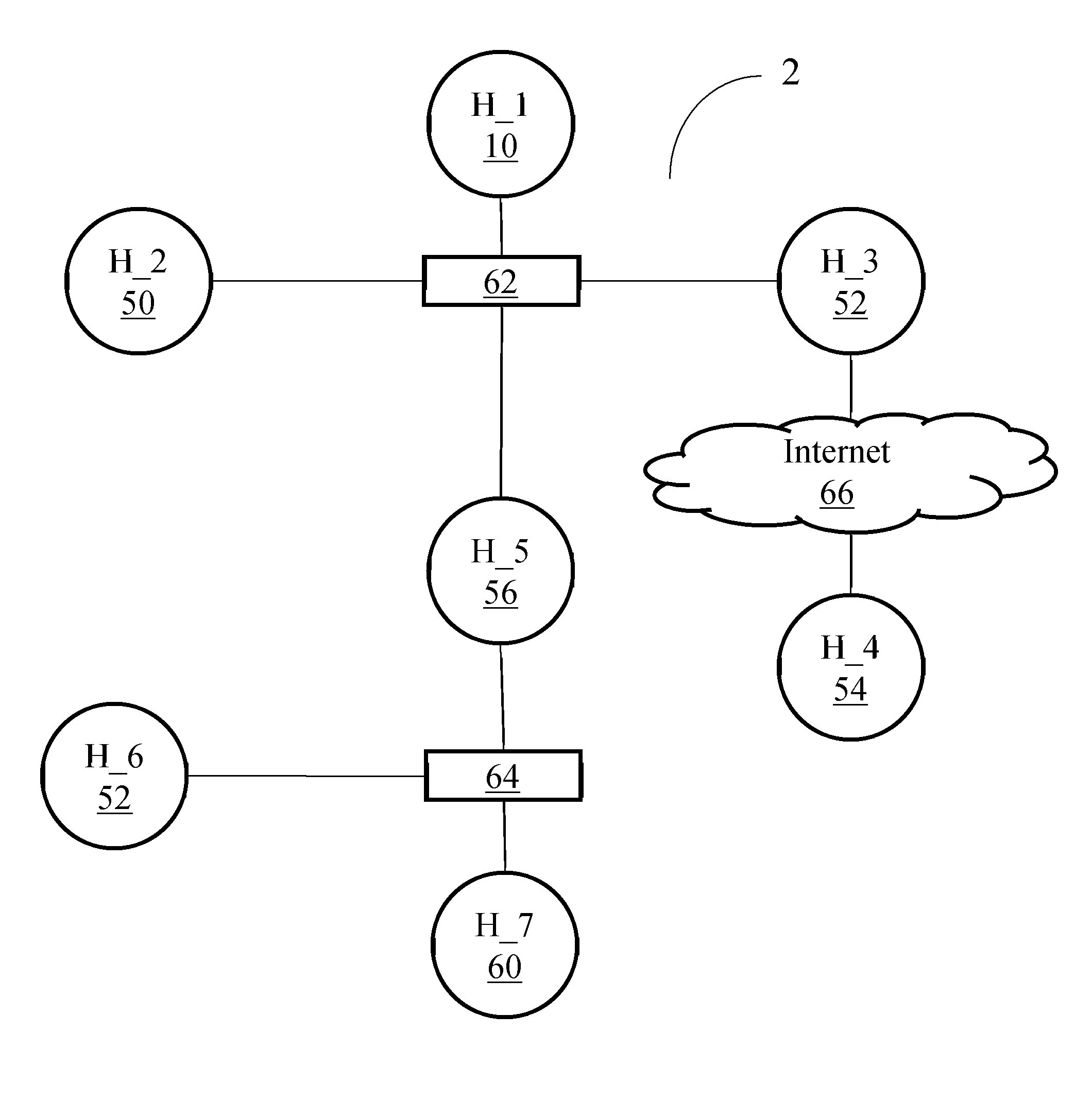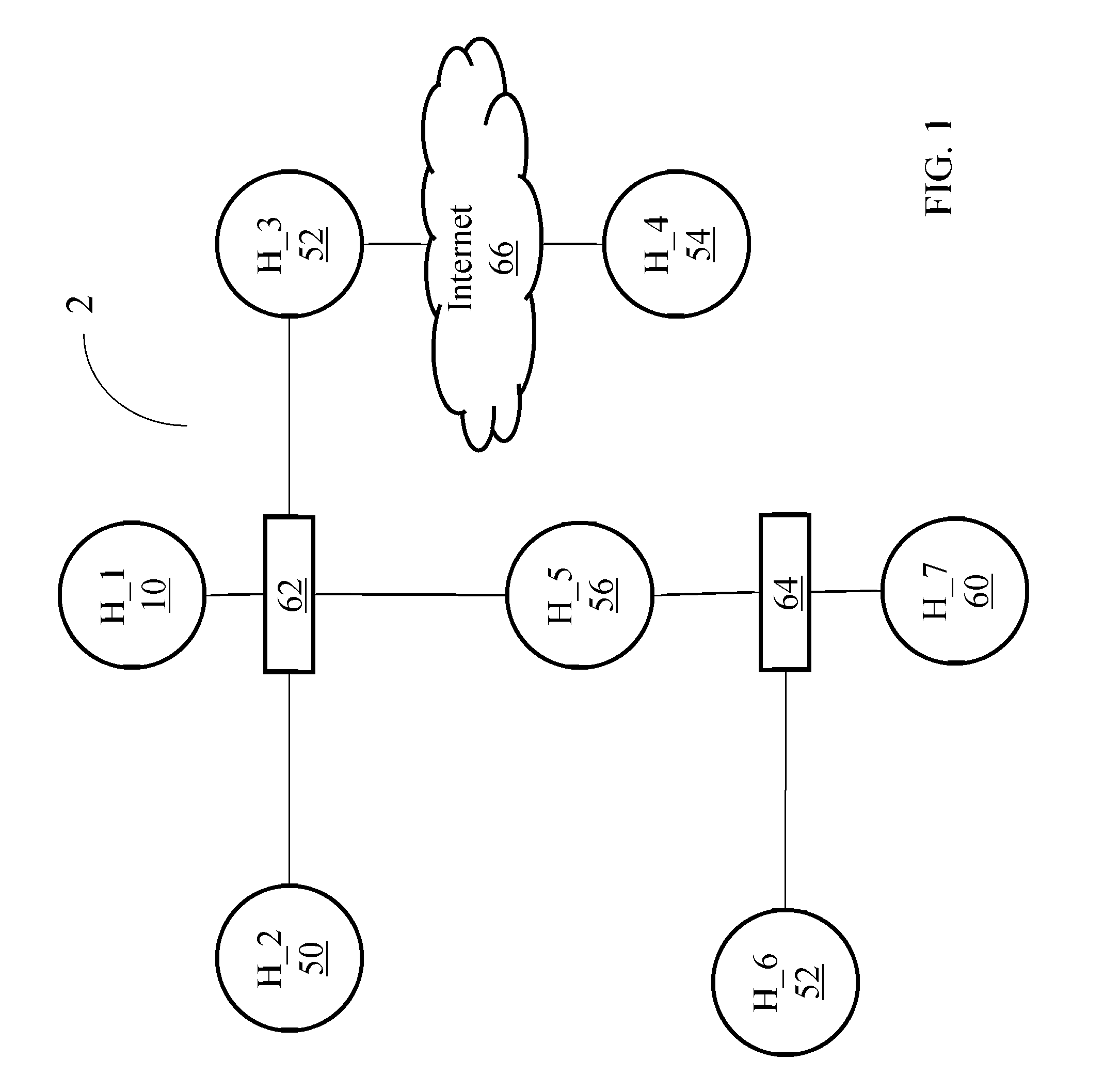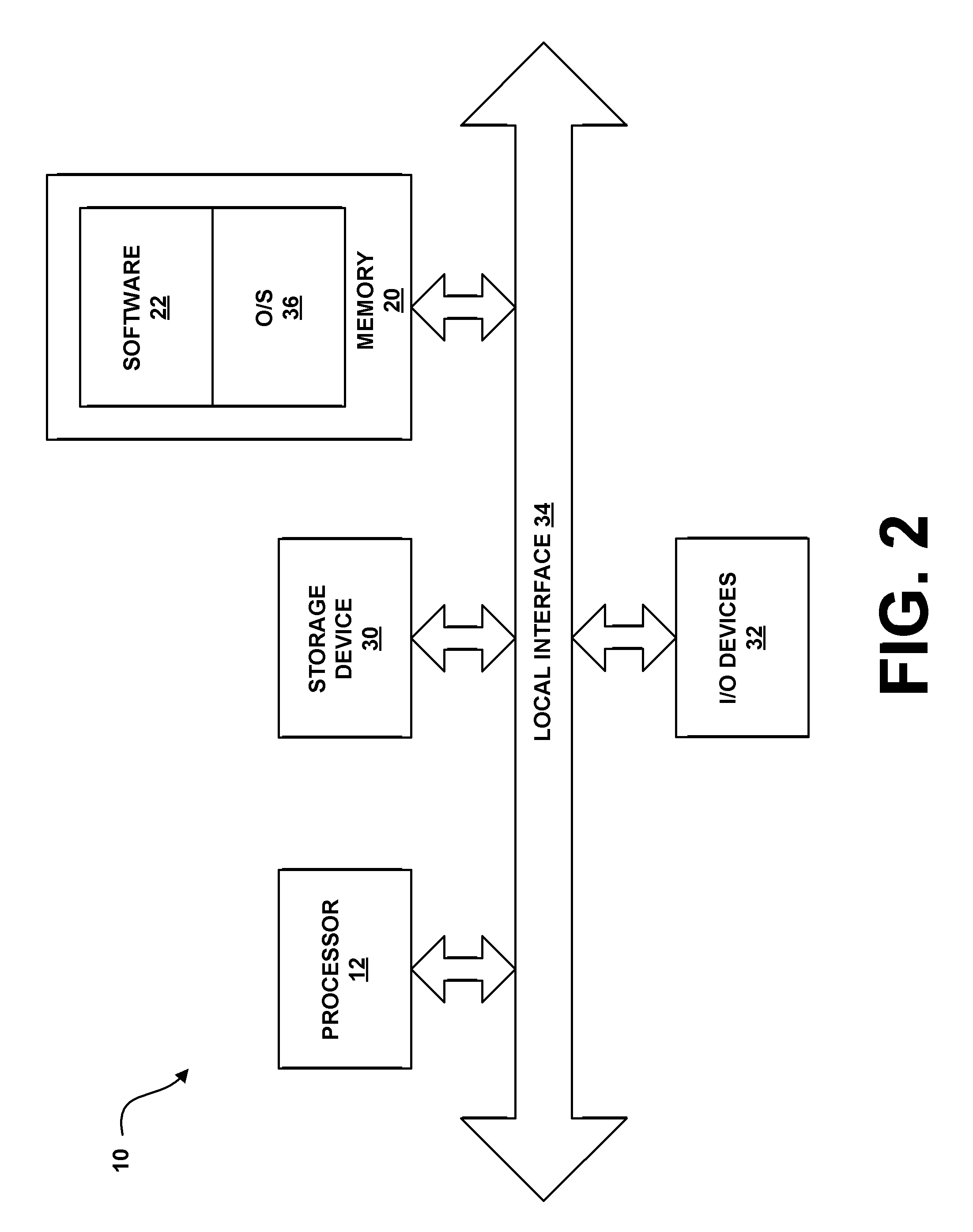System and method for probabilistic attack planning
a probabilistic attack and planning technology, applied in the field of computer and network security, can solve the problems of reducing the number of possibilities, and reducing the number of possible outcomes
- Summary
- Abstract
- Description
- Claims
- Application Information
AI Technical Summary
Problems solved by technology
Method used
Image
Examples
Embodiment Construction
[0049]The present system and method performs automated probabilistic planning of network attacks. A computer-generated plan is provided for an automated penetration test, which isolates the penetration tester from the complexity of selecting the suitable actions that can be executed in a target network. Further, incorporating an attack planning phase to the penetration testing framework allows, in accordance with the present invention, optimizations based on, but not limited to, coverage of the tested threats, attack running time, probability of success, and / or minimizing the expected number of alerts that are generated by other control systems or defense systems, such as, but not limited to, intrusion detection systems. As is known by those having ordinary skill in the art, intrusion detection systems are devices or applications that inspect network traffic, looking for attacks and generating alerts when attacks are detected. Detection is performed by inspecting packet streams look...
PUM
 Login to View More
Login to View More Abstract
Description
Claims
Application Information
 Login to View More
Login to View More - R&D
- Intellectual Property
- Life Sciences
- Materials
- Tech Scout
- Unparalleled Data Quality
- Higher Quality Content
- 60% Fewer Hallucinations
Browse by: Latest US Patents, China's latest patents, Technical Efficacy Thesaurus, Application Domain, Technology Topic, Popular Technical Reports.
© 2025 PatSnap. All rights reserved.Legal|Privacy policy|Modern Slavery Act Transparency Statement|Sitemap|About US| Contact US: help@patsnap.com



